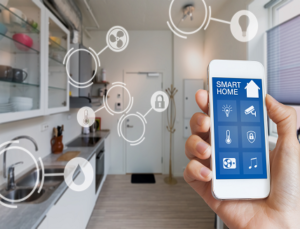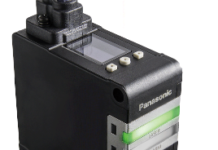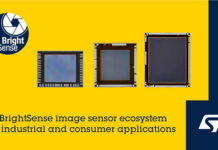
The Internet of Things (IoT) is a platform enabling embedded devices connected to the internet, collect and exchange data with each other. Devices can begin to interact and work with each other, even learning from each other’s experience as humans do. The potential for the IoT and connectivity is endless, as everyday objects can connect and share intelligence (AI – artificial intelligence) and knowledge.
Just one of the huge growth areas for IoT is within Smart Home systems as these encompass a wide variety of applications for the digital consumer. IoT connectivity allows connectivity for areas such as lighting control (on/off/dimmers), voice controlled items, security and locks, garden hydration, energy and water meters, heating, switches, and more.
Smart homes can also utilise a great many different sensors and a key area is within safety and security. For example, optical sensors are used for outdoor security lighting and trigger light fixtures to illuminate gardens at night. Gas sensors, used to detect gas leaks can prove invaluable as security devices. A sensor detecting a gas leak can submit results to a control system in real time and if necessary, shut an entire system down. Smoke sensors are also widely used in domestic environments and act as early warning systems, transferring data quickly enough to save lives. This list of sensors barely scratches the surface of IoT applications and there are many additional ones for consideration such as pressure, light, humidity, gyroscopes and accelerometers, proximity and motion, flow, sound, moisture, image, magnetic; the list of sensors literally goes on and on.
Electrolube has many protection solutions for sensors used in IoT and I would like to share a real life case study focussing on protection of a door sensor manufactured by IoT based smart home products. The customer approached Electrolube with a clear brief; a necessity to protect the PCB from moisture which in term was actively increasing current leakage and reducing battery life. The location was coastal and very humid.
Initially the customer tried an acrylic based Conformal Coating but this did not solve the problem as the battery typically discharged within 2-3 months. The customer asked Electrolube for assistance and from our wide range of Conformal Coatings, were able to make several recommendations, DCA, PUC and UVCL. Following extensive field testing, DCA was pronounced as the optimum solution satisfying all requirements including application method and cost. This is just one isolated case study in the vast spectrum of possiblties contained in the IoT.


















